ETF Overview
The Pacer Trendpilot 100 ETF (NASDAQ:PTNQ) seeks to provide investors with exposure to the Pacer NASDAQ-100 Trendpilot Index.
PTNQ follows a rules-based trend-following strategy that changes exposure based on 3 indicators. The strategy aims to have positive exposure to the Nasdaq 100 when it is trending up and minimize exposure when the index is moving down.
PTNQ currently has ~$953 million in net assets and charges an expense ratio of 0.65%.
Trend-Following Signal Indicators
When the Nasdaq 100 Total Return Index closes above its 200-day simple moving average for five consecutive business days, the exposure of PTNQ will be 100% to the Nasdaq 100.
When the Nasdaq 100 Total Return Index closes below its 200-day simple moving average for five consecutive business days, the exposure of PTNQ will be 50% to the Nasdaq 100 and 50% to 3-Month T-Bills.
When the Nasdaq 100 Total Return Index’s 200-day simple moving average closes lower than its value from five business days earlier, the exposure of PTNQ will be 100% to 3-Month T-Bills.
Management Fee
PTNQ charges a relatively high management fee of 0.65%. To put that into context, the average expense ratio for an actively managed equity mutual fund is ~0.66% and the average equity ETF expense ratio is ~0.16%.
However, PTNQ appears reasonably priced compared to other trend-following ETFs. Comparably, the Simplify Managed Futures Strategy ETF (CTA) charges 0.75% while the KFA Mount Lucas Managed Futures Index Strategy ETF (KMLM) charges 0.90%.
Historical Performance
PTNQ launched in June 2015 and has significantly underperformed the Nasdaq 100, which can be proxied using the Invesco QQQ Trust ETF (QQQ). Since inception, PTNQ has delivered a total return of ~150% compared to a total return of ~237% generated by the Nasdaq 100. While the overall underperformance is troubling, the goal of this fund is to deliver the upside while mitigating the downside. Thus, it makes sense to take the analysis further and consider relative performance during different market environments.
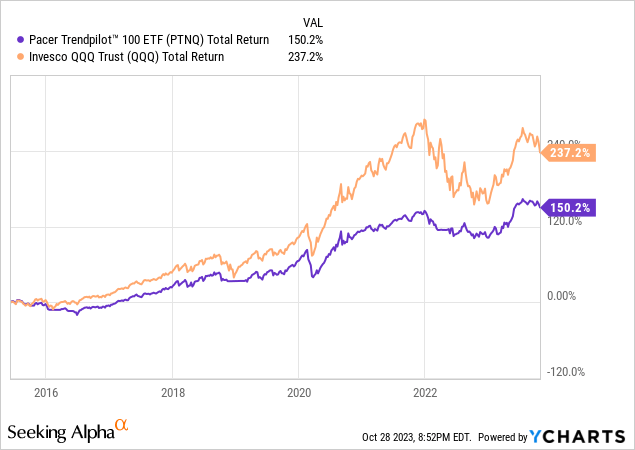
COVID-19 Market
Simply put, 2020 was not a good year for PTNQ. PTNQ returned 29.3% compared to 48.6% for the Nasdaq 100.
The fund failed to protect investors from the initial stock market decline as the decline happened very quickly and thus a sell signal was not generated by the trend-following indicators until the market had already sharply declined. By the time PTNQ started to reduce equity exposure, the market had already started to recover higher and thus PTNQ missed a good part of the recovery.
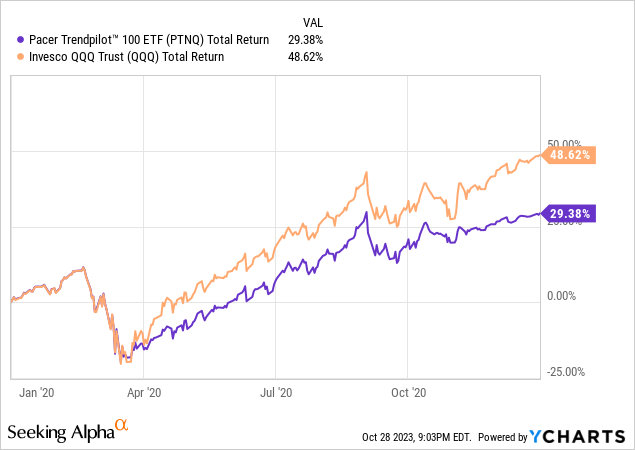
2022 Stock Market Sell-Off
The 2022 bear market was a bright spot for PTNQ as the fund dropped only 16.5% compared to a drop of 32.3% for the Nasdaq 100. The nature of the sell-off was ideal for PTNQ as it was a slower market decline which allowed PTNQ’s trend-following signals and reduce exposure prior to the stock market reaching bottom.
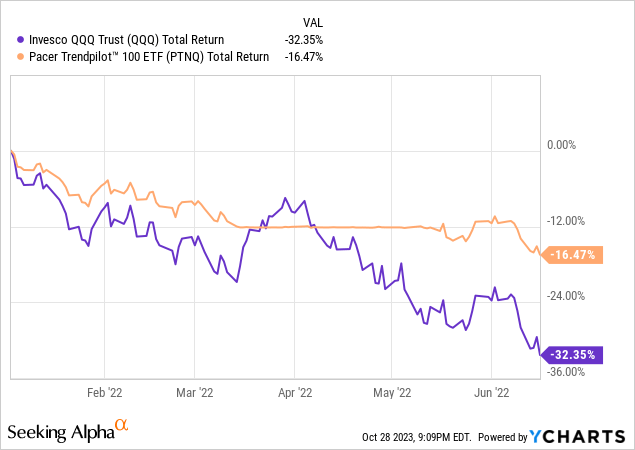
Trailing 3-Year Period
The trailing 3-year performance for PTNQ is also a bright spot as the fund delivered a total return that trailed the Nasdaq 100 by ~1%. PTNQ achieved this with significantly less volatility and thus provided investors with a smoother ride.
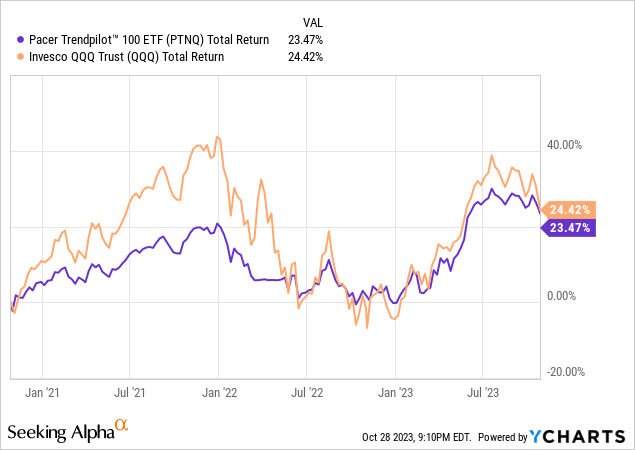
Trailing 3-Month Performance
The past three months have represented a relatively bright spot for PTNQ as the fund is down just 3.6% compared to the 8.2% drop by the Nasdaq 100. It remains to be seen how the rest of 2023 will unfold but if the Nasdaq 100 continues to sell off from here, PTNQ appears positioned to outperform. On the other hand, if the Nasdaq 100 recovers and rallies into year-end PTNQ may fail to participate.
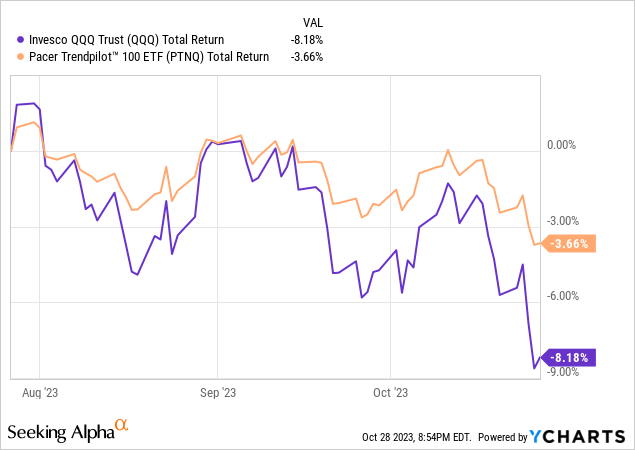
Mediocre Risk-Adjusted Performance
On a risk-adjusted performance basis, PTNQ has achieved mediocre performance at best. PTNQ has posted an average trailing 3yr historical Sharpe Ratio of 1.03 compared to 1.15 for the Nasdaq 100.
While PTNQ has performed worse on a risk-adjusted basis, it has delivered significantly less volatility.
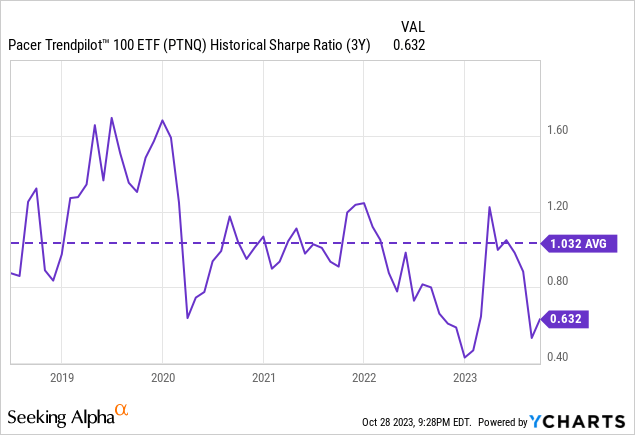
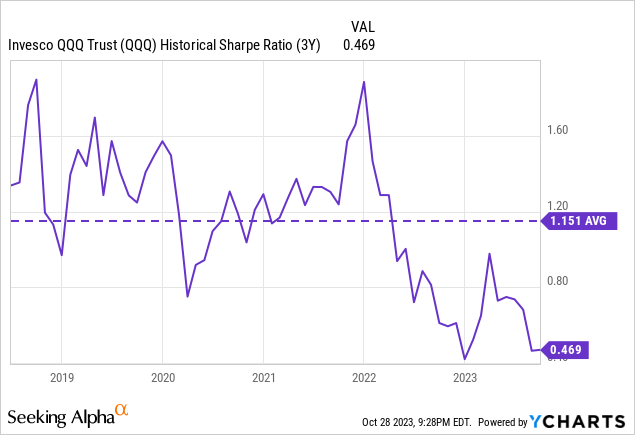
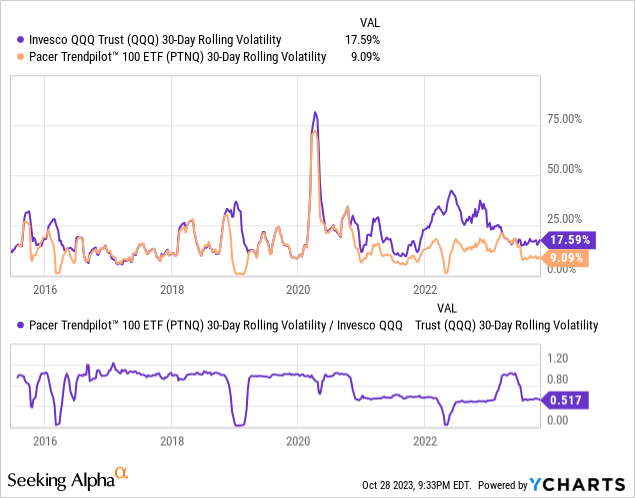
Current Exposures
As of October 30, 2023, PTNQ is currently positioned in a somewhat defensive posture with 50% Nasdaq 100 and 50% T-Bill exposure.
Pacer ETFs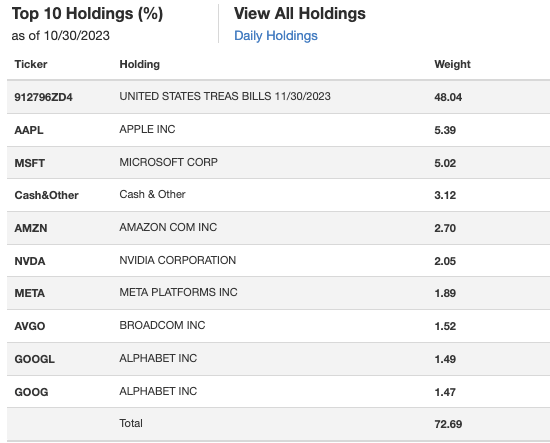
Alternative Risk Management Techniques To Consider
PTNQ is a reasonably well-thought-out ETF which tries to reduce downside risk for investors while allowing for upside participation.
To some degree, PTNQ has succeeded in that it has been able to provide significant downside protection in certain market environments. PTNQ did a particularly good job at providing downside protection in 2022. However, that has not been the case in all stock market sell-offs. The COVID-19 market proved particularly difficult for PTNQ as the sell-off took place more quickly than PTNQ’s trend-following signals could capture.
While PTNQ has provided lower volatility across market cycles, and some degree of downside protection, the cost of that protection has been expensive.
As of this writing, PTNQ has underperformed the Nasdaq 100 by 4.75% on an annualized basis since inception. Simply put, that is a lot of return to give up in order to mitigate risk.
Risk mitigation is generally a good idea and, in my opinion, investors should consider a combination of options including some of the below:
Tail hedging: investors can allocate a small percentage of their portfolio (generally 0-1.5% each year to purchasing deep out of the money put options.) This strategy does an excellent job at protecting the portfolio in the event of a fast market crash.
Reduced equity exposure in favor of other assets: a simple approach to reduce equity risk in the portfolio is simply reduce the percentage allocated to equities while increasing allocations to other assets such as bonds or gold.
Focus on defensive equities: this approach involves selecting individual securities or ETFs that target lower risk areas of the market. Typical examples include utility, healthcare, and consumer staple stocks. While these sectors may experience downside in a market sell-off they tend to go down less. I recently highlighted a few favorite defensive blue chip equities here:
H&R Block: A Defensive Blue Chip Buy
Elevance Health: A High Conviction Blue Chip Buy
Conclusion
PTNQ offers an interesting way for investors to reduce market risk and still participate in market upside in certain environments. However, it is a very expensive way to reduce risk as the total return has trailed the Nasdaq 100 by ~4.75% on an annualized basis since inception. Thus I would consider PTNQ as only a very small part of a risk mitigation strategy.
Investors looking to position defensively should also consider a small allocation to tail hedging, reducing the overall level of equity risk in the portfolio, and focusing on more defensive segments of the stock market.
Read the full article here



